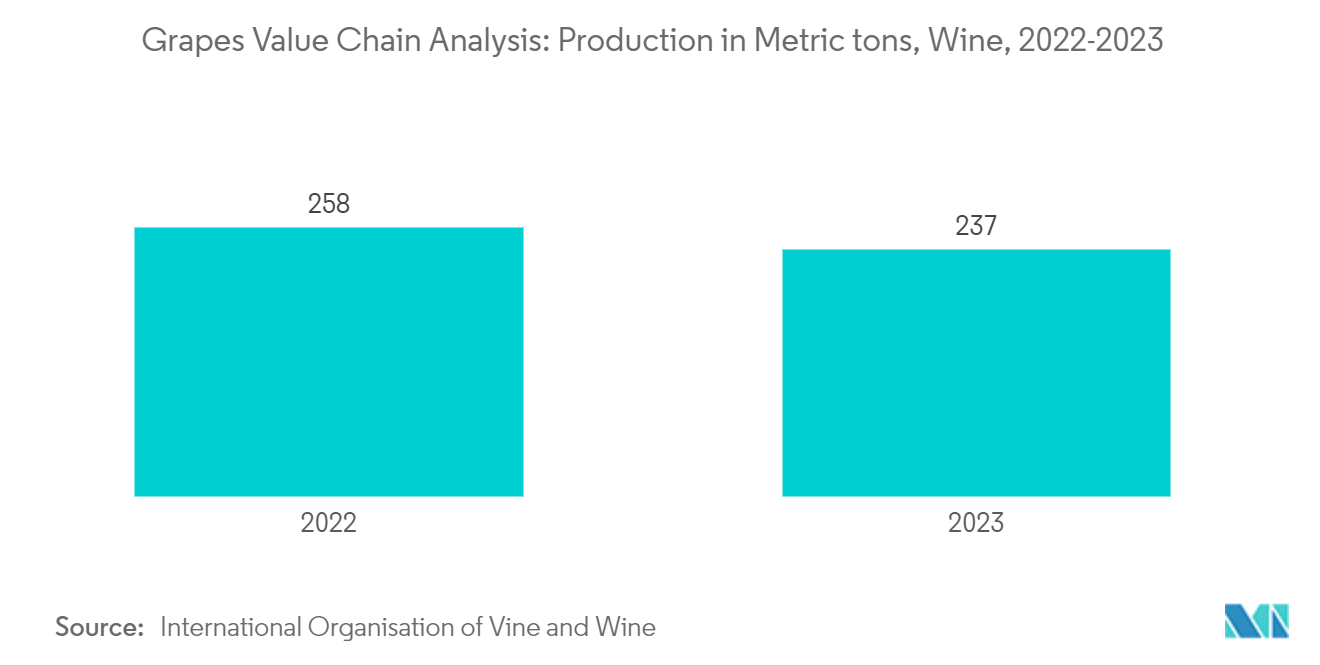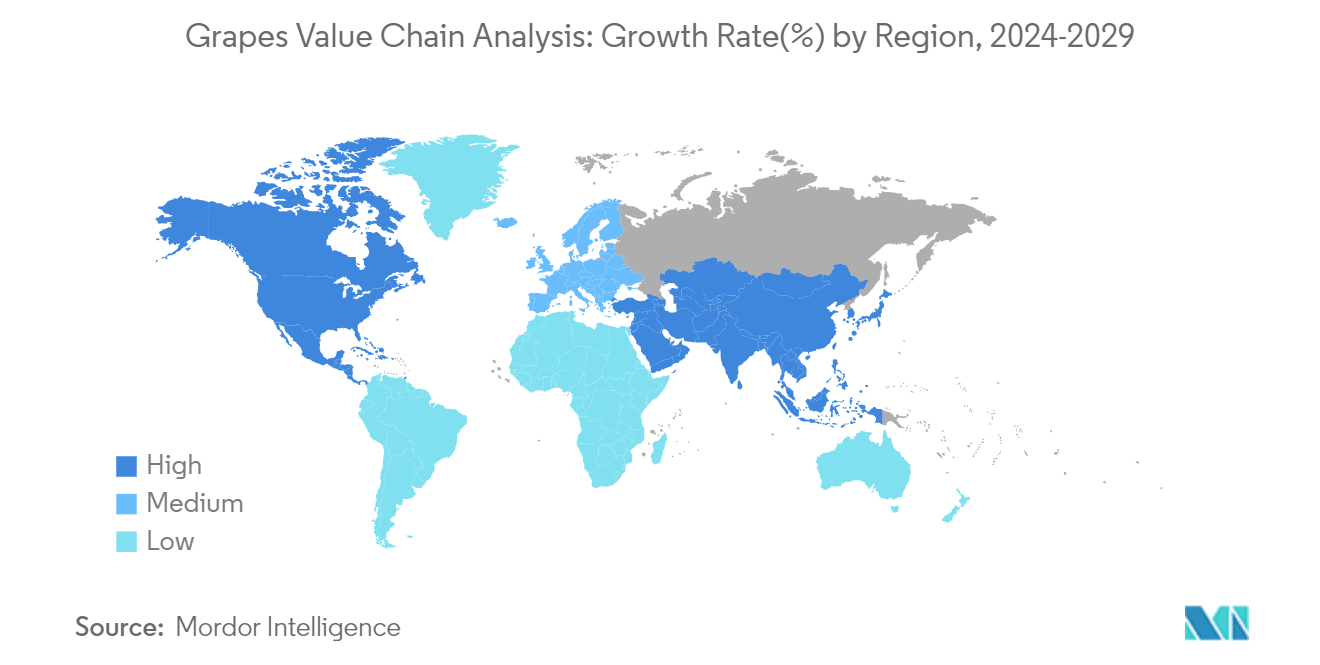Market Trends of Grapes Value Chain Analysis
Decrease in Wine Production
- In 2023, the world's vineyard surface area shrank by 0.5% from the previous year, totaling 7.2 million hectares. This marks the third consecutive year of decline, primarily driven by vineyard removals in major vine-growing regions across both hemispheres. In addition to vine removals, extreme climatic conditions and widespread fungal diseases took a toll on vineyards globally. These challenges culminated in a historically low global wine production of 237 million hectolitres.
- According to the International Organisation of Vine and Wine, the global wine consumption for 2023 was observed at 221 million hectolitres, down 2.6% from 2022's already subdued figures. Inflationary pressures have spiked production and distribution costs, resulting in higher wine prices. This price increase comes at a time when consumers are grappling with reduced purchasing power. Additionally, consumer behavior is being shaped by factors like moderating alcohol consumption, heightened health concerns, and a shift toward premium products. Furthermore, as cannabis and THC consumption gain traction in major global economies, spending is increasingly shifting away from alcohol, prompting consumers to lower their wine purchases.
- As trends in the wine industry shift, enthusiasts are gravitating towards new choices, particularly wines with minimal additives and an emphasis on terroir. With a growing knowledge base, consumers are prioritizing quality, transparency, and ethical production in their selections. The natural wines market is witnessing steady growth, driven by a heightened consumer consciousness about food and drink choices, and a preference for environmentally friendly and sustainable products.

China Leads Global Grape Production
- China dominates the production of grapes in the world. China produced approximately 13.5 million metric tons of grapes and remained the largest grape-producing country in Asia-Pacific and the world in 2023, comprising approximately 48% of the total volume of grapes produced around the globe in 2023. Kyoho and Red Globe are the two most cultivated varieties, accounting for over 50% of the total planted area, though their share is declining. Traditional varieties like Muscat and Summer Black maintain a stable presence, while seedless varieties, including Flame Seedless and Crimson Seedless, show steady growth.
- In recent years, advancements in grape breeding, cultivation, and management technologies have led to the expansion of grape plantations across nearly all provinces in China. Notably, provinces like Hunan, Jiangsu, Zhejiang, and Guangxi have seen rapid growth in acreage. Yunnan province stands out with its exceptionally swift development.
- To enhance both the quantity and quality of their produce, grape farmers are increasingly adopting advanced production facilities and technologies in the country. About one-third of grapes are cultivated using protected horticultural methods, such as greenhouses, plastic insulation sheds, and rain shelters, and they anticipate further expansion of this trend. Due to the integration of protected horticultural methods, innovative breeding technologies, and enhanced storage capabilities, the supply season for domestically produced grapes has been notably extended in the country.


